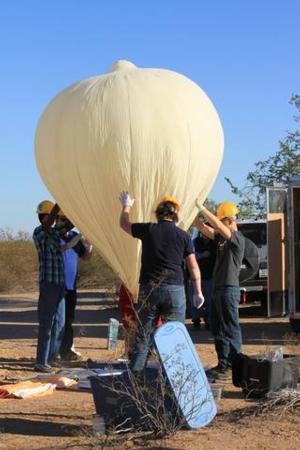Awards Total More Than $39.8 Million
NASA has awarded more than $39.8 million through the agency’s National Space Grant College and Fellowship Project to increase student and faculty engagement in STEM at community colleges, technical schools and universities across the nation.

Each award has a four-year performance period and a maximum value of $760,000 for fiscal year 2020.
NASA awarded funds to 52 proposals aimed at attracting and retaining more students from institutions of higher education in science, technology, engineering, and mathematics programs. Awardees plan to use the funds to increase diversity and inclusion in STEM fields. Each selected submission aligns with goals of both the NASA mission directorates and the agency’s Office of STEM Engagement to enable contributions to NASA’s work; build a diverse, skilled future STEM workforce; and strengthen understanding of STEM through powerful connections at NASA.
One awardee, the Arizona Space Grant Consortium, will provide funding for the Arizona STEM Challenges to Educate New Discoverers (ASCEND) program, which will allow students to participate in designing, building, and flying entry-level balloon payloads. Through each payload and launch, students will collect and study data while building excitement for careers in STEM. The ASCEND program will promote NASA and Space Grant to underrepresented student populations.
On the East Coast, the Georgia Space Grant Consortium will bring internship opportunities to students from West Georgia Technical College and Atlanta Metropolitan State College. Both colleges will offer two local-industry internships during the fall and spring semesters. Students from Atlanta Metropolitan State College enrolled in the Engineering Transfer associate degree program will be eligible to apply, as well.

Nebraska Space Grant Consortium will continue offering project-based learning opportunities to students from the University of Nebraska-Lincoln. As part of the program, participating college students will be able to compete in the Lunabotic challenge at NASA’s Kennedy Space Center in Florida. Working in teams, students will be tasked with creating an operational robot to demonstrate techniques and technology for mining minerals on the Moon – a real-world problem NASA must solve in the agency’s Moon to Mars exploration initiative and its Artemis program.
This month, the NASA Space Grant Consortium celebrates its 30th anniversary of inspiring the next generation of explorers. NASA Space Grant Consortia operates in all 50 states, the District of Columbia and the Commonwealth of Puerto Rico. In addition, NASA partners with more than 1,000 affiliates, including colleges, universities, industry, museums, science centers, nonprofit organizations, and state and local agencies, to enrich science and engineering education, research and public outreach efforts for NASA's aeronautics and space projects.
The National Space Grant College and Fellowship Project is managed by NASA’s Office of STEM Engagement. Through NASA’s higher education program and funding, the agency continues its tradition of investing in STEM education with the goal of developing authentic learning opportunities that are relevant to NASA’s mission. These investments develop the skills needed to achieve the nation's exploration goals through a robust, diverse STEM workforce.
(Images provided with NASA news release)
 Airborne 06.05.24: Yakstars Midair, Electra eSTOL Test, Space Tour No-Go
Airborne 06.05.24: Yakstars Midair, Electra eSTOL Test, Space Tour No-Go Classic Aero-TV: Aviation Prop Masters--Hartzell Composite Props for the KingAir
Classic Aero-TV: Aviation Prop Masters--Hartzell Composite Props for the KingAir Aero-News: Quote of the Day (06.03.24)
Aero-News: Quote of the Day (06.03.24) ANN's Daily Aero-Linx (06.03.24)
ANN's Daily Aero-Linx (06.03.24) ANN's Daily Aero-Term (06.03.24):Maximum Authorized Altitude
ANN's Daily Aero-Term (06.03.24):Maximum Authorized Altitude




